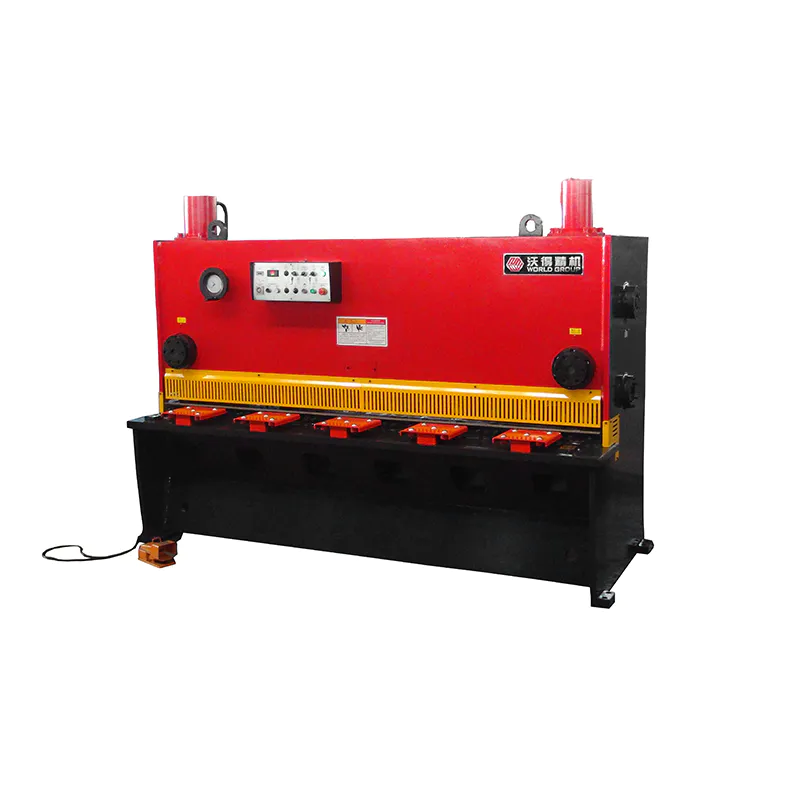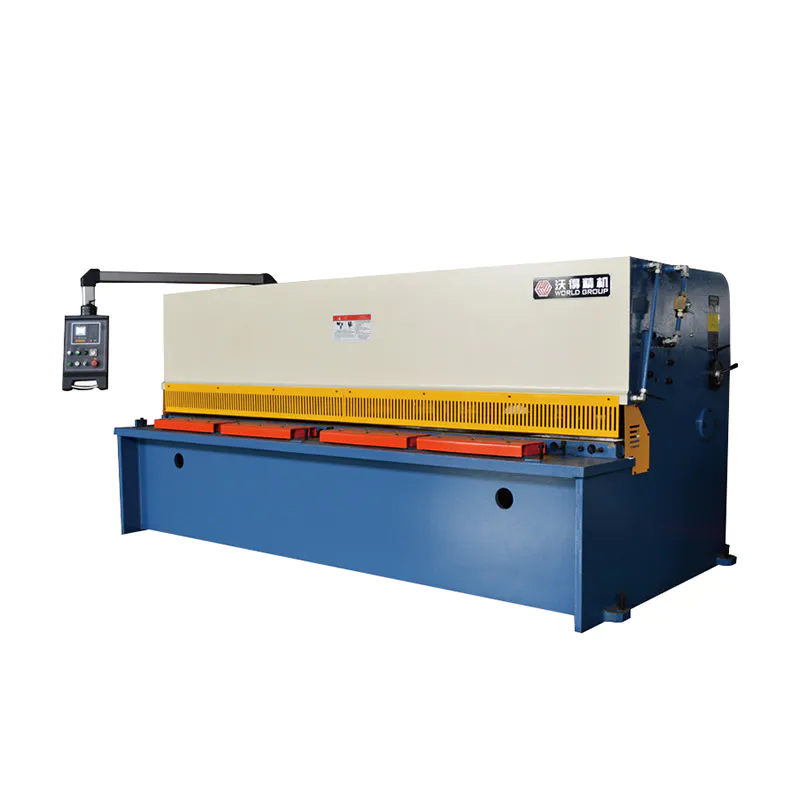jackow@pressmachine-world.com+86-13817590728 WORLD power press machine manufacturer and supplier
What is the Difference Between Mechanical and Hydraulic Shearing Machines?
There are two main kinds of shearing machines, mechanical and hydraulic, distinguished by the transmission they use. The transmission used most often by machines with cutting thicknesses less than 10 mm is mechanical, whereas hydraulic shearing machine is the choice for machines with cutting thicknesses greater than 10 mm. A few differences between mechanical and hydraulic shearing machines are:
Application Differences
Hydraulic Shearing Machines
In metal manufacturing, hydraulic shearing machine is indispensable when extreme precision and output are required. The ability to cut various materials and thicknesses precisely is made possible by the numerical control capabilities of hydraulic shearing machines. Their versatility makes them the go-to for complicated metal production tasks with a wide range of cutting demands. Hydraulic shearing machines provide precise programming and control of the cutting process thanks to their numerical control feature.
Hydraulic shearing machines are essential for precise cutting. These machines are a lifesaver for jobs requiring a high degree of precision, including cutting materials with precise geometric specifications or making elaborate drawings. Operators can tweak the cutting settings with the numerical control tool to ensure the final result is up to par with the project's exacting standards.
Mechanical Shearing Machines
Mechanical shearing machine has unique benefits that make it perfect for simpler cutting tasks. These machines are perfect for functions that do not demand high precision because of their simple design and use of mechanical transmission. Mechanical shearing machines are effective in thin plate cutting applications and small to medium shearing machines because they easily handle less complicated cutting operations. Mechanical shearing machines are long-lasting and affordable because of their straightforward construction. They aren't as precise as hydraulic alternatives, but they work great when you don't need a detailed cut pattern.
Operational Differences
Hydraulic Shearing Machines
Hydraulic shearing machines use a hydraulic system to achieve regulated and accurate cutting. The two blades, one resting on the knife holder and the other fastened to the workbench, cooperate to cut. The rear gauge assists as the motor adjusts the sheet's position. The sheet is compressed using a pressing cylinder so as not to move while being cut. Workplace safety is improved with the addition of safety elements like guardrails. Nitrogen is essential during the return voyage since it allows rapid and impact-free retracting.
Mechanical Shearing Machines
Mechanical shearing machine, on the other hand, depends on mechanical transmission. The eccentric shaft is engaged using a clutch and gear reduction system after a motor has driven the flywheel shaft. To cut, the eccentric shaft propels the upper tool post in a reciprocating motion. To provide pressure before cutting, a cam manipulates the presser foot, and spring force returns it during retraction. With its all-steel welded construction, the machine prioritizes user-friendliness, quiet operation, and reduced energy consumption.
Precision Control Effects
Hydraulic Shearing Machines
Using numerical control technology, hydraulic shearing machines simplify operations and increase worker productivity. Controlling mechanical quantities like speed, position, and angle is the domain of numerical control, which employs digital instructions to regulate motion. Computer numerical control (CNC) hydraulic shears greatly improve cutting precision and overall efficiency using computers for digital program control. Another example of how hydraulic shearing machines have advanced technologically is their dependence on data carriers and binary data operations.
Mechanical Shearing Machines
There has been a slower rate of technological advancement for mechanical shearing machines in the past. An open gear transmission and a resistance key type clutch construction are prevalent, even if there have been advancements in blade gap adjustment. Modern electrical appliances provide less noise, easier operation, and less maintenance thanks to footswitches and manual switches. While the all-steel welded construction in a mechanical shearing machine guarantees efficiency and simplicity, the precise control effect is not as advanced as hydraulic alternatives.
Structural Differences
Hydraulic Shearing Machines
A hydraulic shearing machine is known for its sturdy construction, allowing them to perform various cutting tasks. Multiple materials and thicknesses may be accommodated thanks to the numerical control feature. The hydraulic technology makes cutting regulated and effortless, with little vibration and guarantees excellent results.
Mechanical Shearing Machines
Mechanical shearing machines are long-lasting and easy to use thanks to their resistance key type clutch structure, open gear transmission, and dependence on sophisticated electrical appliances. For certain tasks, especially those requiring less complex cutting, their simple form and user-friendly operation make them ideal.
Bottom Line
When deciding between hydraulic and mechanical shearing machines, you must consider your project's unique needs. To choose the machine most suitable for your needs, it is vital to understand the basic distinctions between them. When you know the differences between mechanical and hydraulic shearing machines, you can choose the one most suited to your cutting needs. Visit Yingxin to select the right shearing machine for your operations!

Quick Links
Contact Us
• Tel: 86-21-62828320
• Fax: 86-21-62829970
• E-mail: jackow@pressmachine-world.com
• WHATSAPP: +8613817590728
• WEHCHAT: W13817590728
Add
• Exporting Office: 12F, Huaihai Road West, Shanghai, China
• Factory: Picheng World Industrial Park, Danyang City, Jiangsu Province, China





